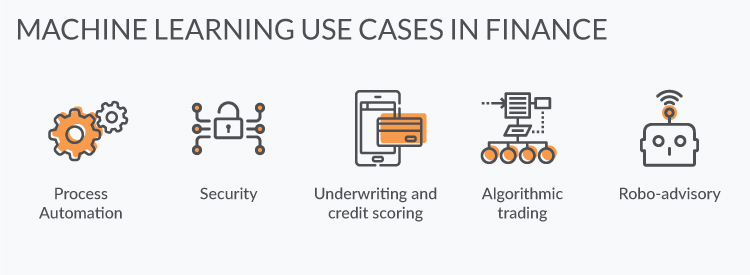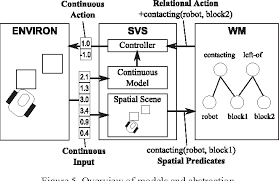
There are several important parts of a neural network, including the number of layers, nonlinear transforms, and Learning algorithms. This article provides a detailed explanation of each component. We also discuss differences between a perceptron-layer and a generational adversarial network. For more information on the benefits of both, please read on. Let's start by defining the difference between a perceptron network and a generative antagonistic network.
Perceptron layers
Layers of perceptron neurons in a neuralnet are composed neuron that form classes as well as hyperplanes. The article's first subsection discussed the potential capabilities of the 3-layer perceptron in categorizing polyhedral zones. In reality, such classifications are not possible because the properties of the regions are not well-known. In addition, analytic computation of the hyperplane equations is not possible. To estimate these parameters, it is necessary to use a training process.

Nonlinear transforms
The use of nonlinear transforms in neural networks enables the development of more complex models. The universal approximation theory, for example, states that any continuous function may be approximated by a network if m is the number neurons. This requires that the network contain at least one hidden layer, and an appropriate amount of units. Complex data structures can be modelled using nonlinear transforms.
Adaptability
One of life's most extraordinary characteristics is its ability to adapt. Artificial neural networks which are inspired by the biological nervous system have to be adaptable. Here is a brief overview of adaptive artificial neural network and their capabilities. These systems can change their architectures and learn as new data are introduced. This concept is worth exploring. It will brighten the future of artificial Intelligence!
Learning algorithms
The principle of learning algorithms with neural networks is similar to machine learning, with the difference being that the machine learns how to apply weights to inputs. A neural network might learn to recognize objects by adjusting their weights. This model gradually improves over time, as the weights in each layer change as the network gains experience. Backpropagation is a method of training a network using a training input.

Applications
Neural networks have many uses. They can be used to predict weather or other phenomena, like river-flow. This technology is capable of performing as well as human experts in many applications. The forecasting of electric loads, economic forecasts, and natural phenomena are just a few examples. We will examine some examples for neural network applications. You can read on to learn about these powerful computers and how they are used in the real-world.
FAQ
How does AI work?
An algorithm refers to a set of instructions that tells computers how to solve problems. An algorithm can be described as a sequence of steps. Each step is assigned a condition which determines when it should be executed. Each instruction is executed sequentially by the computer until all conditions have been met. This continues until the final results are achieved.
Let's say, for instance, you want to find 5. You could write down each number between 1-10 and calculate the square roots for each. Then, take the average. However, this isn't practical. You can write the following formula instead:
sqrt(x) x^0.5
This says to square the input, divide it by 2, then multiply by 0.5.
This is the same way a computer works. It takes your input, squares and multiplies by 2 to get 0.5. Finally, it outputs the answer.
Which industries use AI more?
The automotive industry is among the first adopters of AI. BMW AG uses AI, Ford Motor Company uses AI, and General Motors employs AI to power its autonomous car fleet.
Other AI industries include banking and insurance, healthcare, retail, telecommunications and transportation, as well as utilities.
Which are some examples for AI applications?
AI is used in many fields, including finance and healthcare, manufacturing, transport, energy, education, law enforcement, defense, and government. These are just a few of the many examples.
-
Finance - AI has already helped banks detect fraud. AI can spot suspicious activity in transactions that exceed millions.
-
Healthcare – AI is used for diagnosing diseases, spotting cancerous cells, as well as recommending treatments.
-
Manufacturing - AI can be used in factories to increase efficiency and lower costs.
-
Transportation – Self-driving cars were successfully tested in California. They are being tested in various parts of the world.
-
Utilities are using AI to monitor power consumption patterns.
-
Education - AI has been used for educational purposes. Students can interact with robots by using their smartphones.
-
Government - AI can be used within government to track terrorists, criminals, or missing people.
-
Law Enforcement – AI is being used in police investigations. The databases can contain thousands of hours' worth of CCTV footage that detectives can search.
-
Defense - AI can both be used offensively and defensively. An AI system can be used to hack into enemy systems. Defensively, AI can be used to protect military bases against cyber attacks.
Statistics
- The company's AI team trained an image recognition model to 85 percent accuracy using billions of public Instagram photos tagged with hashtags. (builtin.com)
- That's as many of us that have been in that AI space would say, it's about 70 or 80 percent of the work. (finra.org)
- Additionally, keeping in mind the current crisis, the AI is designed in a manner where it reduces the carbon footprint by 20-40%. (analyticsinsight.net)
- More than 70 percent of users claim they book trips on their phones, review travel tips, and research local landmarks and restaurants. (builtin.com)
- While all of it is still what seems like a far way off, the future of this technology presents a Catch-22, able to solve the world's problems and likely to power all the A.I. systems on earth, but also incredibly dangerous in the wrong hands. (forbes.com)
External Links
How To
How do I start using AI?
You can use artificial intelligence by creating algorithms that learn from past mistakes. This allows you to learn from your mistakes and improve your future decisions.
For example, if you're writing a text message, you could add a feature where the system suggests words to complete a sentence. It would use past messages to recommend similar phrases so you can choose.
However, it is necessary to train the system to understand what you are trying to communicate.
To answer your questions, you can even create a chatbot. You might ask "What time does my flight depart?" The bot will tell you that the next flight leaves at 8 a.m.
You can read our guide to machine learning to learn how to get going.